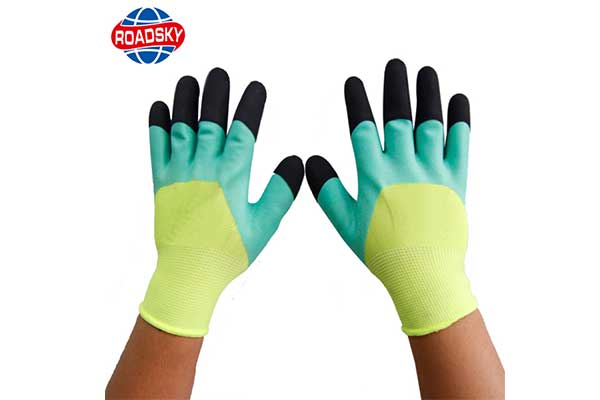Types of Safety Gloves: A Comprehensive Guide
Safety gloves are an essential part of personal protective equipment (PPE) in many industries. They protect workers from various hazards, including chemical burns, cuts, abrasions, and thermal risks. With so many different types of safety gloves available, choosing the right pair for the job can be challenging. This comprehensive guide will help you understand the various types of safety gloves, their applications, and their importance in workplace safety.

Types of Safety Gloves
Safety gloves are categorized based on the materials they are made from and the specific hazards they are designed to protect against. Here are the primary types of safety gloves:
1. Disposable Gloves
Disposable gloves are made from lightweight materials such as latex, nitrile, or vinyl. They are designed for single-use and are commonly used in medical, laboratory, and food handling applications.
- Latex Gloves: Known for their elasticity and snug fit, latex gloves offer excellent dexterity and sensitivity. They provide good protection against bacteria and viruses but can cause allergic reactions in some individuals.
- Nitrile Gloves: These gloves are a popular alternative to latex gloves. They are puncture-resistant and provide excellent chemical protection, making them ideal for medical and industrial use.
- Vinyl Gloves: Vinyl gloves are less expensive and provide basic protection. They are suitable for low-risk tasks such as food preparation.
2. Chemical-Resistant Gloves
Chemical-resistant gloves are designed to protect against hazardous chemicals and solvents. They are made from various materials, each offering different levels of protection:
- Butyl Rubber Gloves: Excellent for handling highly corrosive acids and gases. They offer great flexibility and resistance to oxidation.
- Neoprene Gloves: Suitable for handling oils, acids, and other chemicals. Neoprene gloves provide good flexibility and resistance to abrasions.
- PVC Gloves: Polyvinyl chloride (PVC) gloves are suitable for handling acids, caustics, and alcohols. They are durable and resistant to punctures and abrasions.
3. Cut-Resistant Gloves
Cut-resistant gloves are designed to protect against sharp objects and are commonly used in industries like construction, manufacturing, and food processing. They are made from materials such as Kevlar, stainless steel mesh, and high-performance polyethylene (HPPE).
- Kevlar Gloves: Lightweight and heat-resistant, Kevlar gloves provide excellent cut resistance and are often used in automotive and glass handling industries.
- Stainless Steel Mesh Gloves: These gloves offer the highest level of cut resistance and are typically used in food processing and meatpacking.
- HPPE Gloves: High-performance polyethylene gloves provide a balance of cut resistance, comfort, and dexterity, making them suitable for various applications.
4. Impact-Resistant Gloves
Impact-resistant gloves are designed to protect against blunt force trauma and crushing injuries. They are commonly used in construction, mining, and heavy machinery operations.
- Thermoplastic Rubber (TPR) Gloves: These gloves feature TPR padding on the knuckles and fingers to absorb impact and provide flexibility.
- Anti-Vibration Gloves: Designed to reduce the effects of vibration from power tools, these gloves feature gel or foam padding to protect against hand-arm vibration syndrome (HAVS).
5. Thermal-Resistant Gloves
Thermal-resistant gloves protect against extreme temperatures, both hot and cold. They are used in industries such as foundries, welding, and cryogenics.
- Aluminized Gloves: These gloves reflect radiant heat and are used in high-heat environments such as foundries and welding operations.
- Cryogenic Gloves: Designed for handling extremely cold materials, cryogenic gloves provide protection against frostbite and cold burns.
6. Electrical-Insulating Gloves
Electrical-insulating gloves protect workers from electrical shocks and are essential in electrical and utility work. They are classified by their resistance to voltage:
- Class 0-4 Gloves: Ranging from Class 0 (up to 1,000 volts) to Class 4 (up to 36,000 volts), these gloves are tested and rated for specific voltage protection levels.
7. General-Purpose Gloves
General-purpose gloves are versatile and used in various industries for tasks that require basic hand protection. They are typically made from cotton, leather, or synthetic materials.
- Leather Gloves: Durable and abrasion-resistant, leather gloves are used in construction, welding, and general labor.
- Cotton Gloves: Lightweight and breathable, cotton gloves provide comfort and basic protection for light tasks.

Choosing the Right Safety Gloves
Selecting the right safety gloves depends on the specific hazards present in your work environment. Here are some key factors to consider:
- Hazard Type: Identify the primary hazards (chemical, cut, impact, thermal, electrical) in your workplace.
- Material: Choose gloves made from materials that offer the necessary protection against identified hazards.
- Fit and Comfort: Ensure the gloves fit well and provide the required dexterity and comfort for the tasks.
- Compliance: Check that the gloves meet relevant safety standards and regulations.
Conclusion
Understanding the different types of safety gloves and their applications is crucial for maintaining workplace safety. By selecting the right gloves for the job, you can protect yourself and your employees from various hazards, ensuring a safer and more productive work environment.

